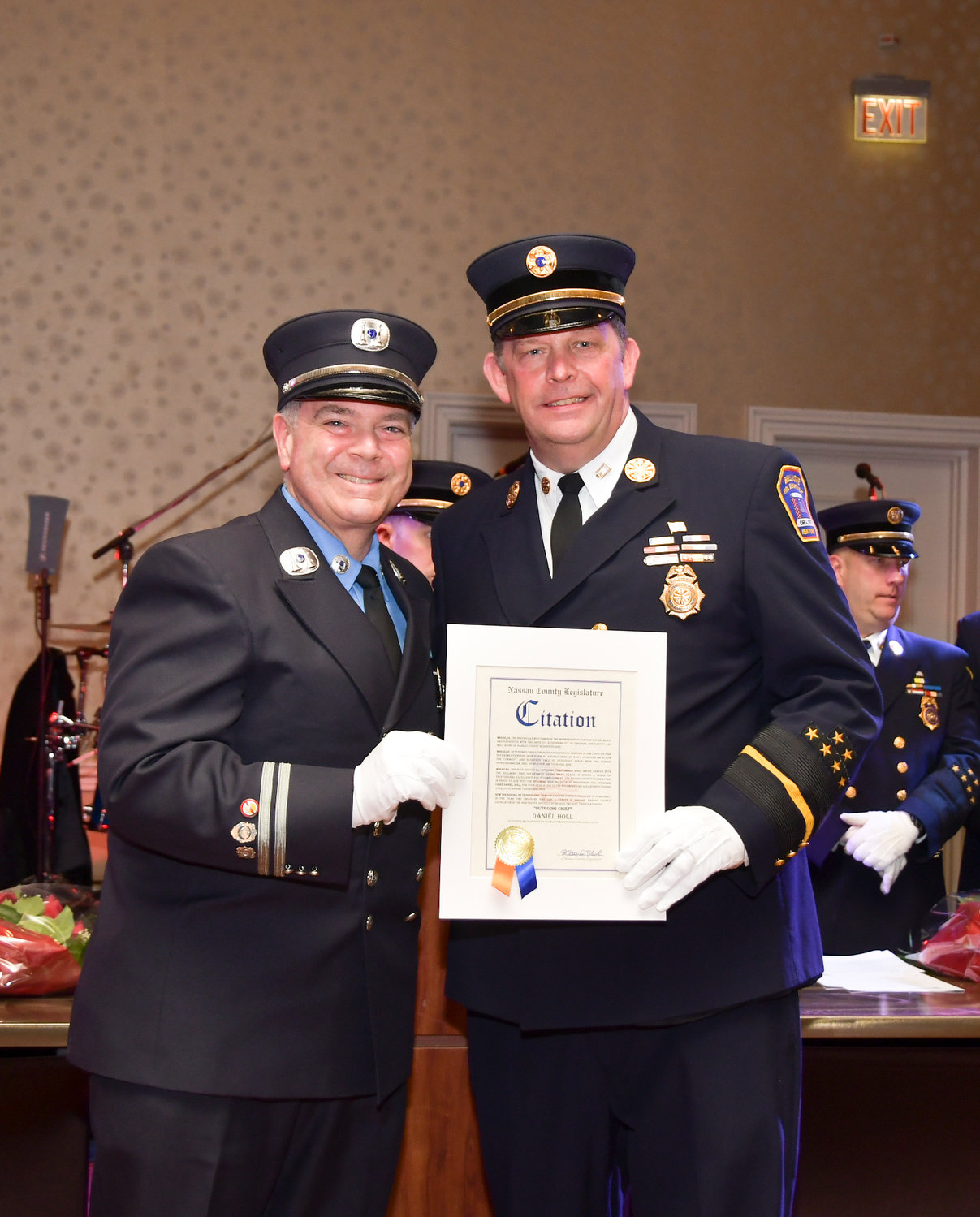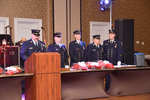Bellmore chiefs pass the torch
New department heads installed
It’s a new year for the Bellmore Fire Department, and the operating chiefs have changed once again.
Peter C. Schmalenberger was sworn in as chief of the department at the group’s annual installation dinner at the Hyatt Regency last month. Also installed were 1st Assistant Chief Michael Irving and 2nd Assistant Chief Joseph Ancona.
“It’s a great honor to be chief,” Schmalenberger told the Herald last week. “I lead a great group of guys who I consider family.”
Schmalenberger joined the department in October 1983, following in the footsteps of his father, who spent 64 years in the department and followed an even longer tradition in the family. The chief’s uncles, grandfathers and beyond all had roles in the department. “I get to continue the legacy of my family,” he said.
This will not be Schmalenberger’s first experience as a leader. He became the department’s 2nd assistant chief in 1998, 1st assistant chief in 2000 and chief in 2002. “I enjoy doing every moment,” he said. “It’s very rewarding.”
“This is something I’ve always wanted to do,” said Ancona, who is taking on the role of chief for the first time. “I was always more of a quiet kid, but I wanted to get more involved.”
He described rising through the Bellmore F.D.’s ranks, from new member in 2007 to captain of one of the department’s fire engines. “It sounds cliché,” he said, “but it’s something everyone wants to do — everyone, as a kid, imagined themselves playing with a fire engine or running into a fire.”
“I’m lucky to serve with Pete,” Ancona added.
Irving has experience in the role as well — he trained from the age of 14 in the department’s junior program and became chief in 2009. He also followed his father’s example.
The dinner also celebrated outgoing chief Daniel Holl for his years of commitment to the community. Holl joined the department in 1979 with his father, and has been active since. He first sat in the chief’s office from 1991 to 1998, and again for the past nine years.
Chief may be a voluntary position, but it’s a full-time job, said Holl. “It’s a hard job. It’s not easy, and a lot of hard decisions have to be made. At the end of the day, everyone has to get home safe.”
Holl recalled some of the challenges he faced as chief, such as the requisite 24-hour availability, and the handling of complex equipment. “There were plenty of nights where I got two to three hours of sleep,” he said.
He explained that the passion to serve was instilled in him by his father when he was a teen — “I just followed and kept going higher,” he said. His son, Ryan, is doing the same, and, in addition to volunteering for the department, has become an emergency medical technician in New York City. Holl’s other son, Kevin, is currently training as a junior firefighter.
The members described the biggest challenge facing the department now — and it’s not fighting fires. Retaining new, young members has proven more difficult as time goes on, they said. “If their heart’s not in it,” Ancona said, “it’s hard to keep new members interested.”
For Ancona, the experience has been wholly worthwhile. “I’m very lucky to learn from knowledgeable guys,” he said.

 47.0°,
Fair
47.0°,
Fair 








